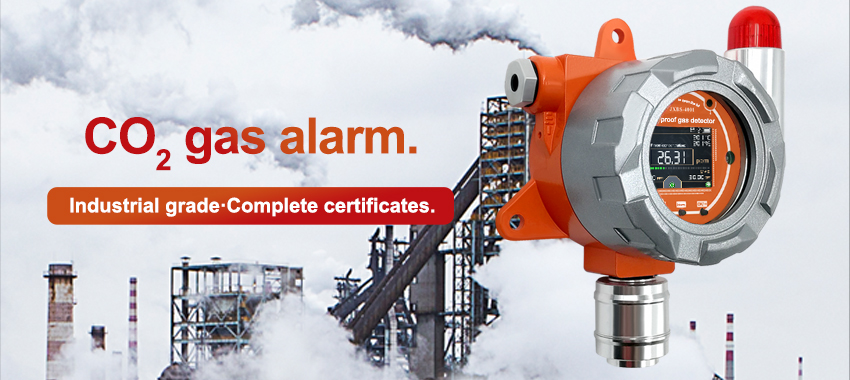Without a carbon monoxide detector, it is almost impossible to know if you have a carbon monoxide problem.
Carbon monoxide is a "silent killer" because anyone can inhale it without knowing it. Symptoms of carbon monoxide poisoning include dizziness, nausea, weakness, confusion and chest pain. Symptoms can take hours to appear and may be mild at first, but serious complications can occur within hours of exposure. The CO detector will sound an alarm when the CO reaches unsafe levels, giving you the opportunity to leave the space and go outdoors. The higher the concentration, the faster the alarm goes off.
We measure carbon monoxide in the atmosphere in parts per million (ppm). Standard carbon monoxide detectors can take up to an hour to sound an alarm at levels of 70 ppm and below. Carbon monoxide detectors will respond to extremely high concentrations of 400 ppm and above in as little as four minutes.

When does carbon monoxide become dangerous and unsafe?
Carbon monoxide levels may vary by source and space. A well-tuned car produces more than 80,000 ppm of CO2 immediately after starting, then drops to about 300 ppm 15 minutes later. Kitchen gas stoves must not produce more than 800 ppm of carbon dioxide, but are usually adjusted to produce less than 50 ppm. The National Fire Service says the average adult will experience symptoms of poisoning if exposed to 50 parts per million of carbon monoxide for a long period of time. At 400 ppm, headaches and nausea can occur as little as an hour of exposure. At 6,400 ppm, there is a serious risk of death 15 or 20 minutes after exposure.
But the amount of carbon monoxide is ideal. Low concentrations can become dangerous. Even if your stove produces less than 50 ppm of CO, if you leave it on, CO can build up and concentrate at dangerous levels in your kitchen. The higher the concentration of carbon monoxide, the more likely it is to cause illness, injury and even death.

How does the CO detector work?
CO detector is a simple device with several key components. A silicon microchip in a plastic casing sends the charge to a small testing chamber containing a CO sensor. The sensor can detect and measure the concentration of CO in the atmosphere. If the sensor detects high levels of CO, the microchip will trigger an alarm. Carbon monoxide alarms are powered by electrical systems or batteries in a home or business.
Carbon monoxide detectors may also include a power indicator, test button, and LCD screen. Models with LCD screens can display system status and CO levels during alerts. The power indicator will let you know if the device is working or if the battery needs to be replaced. Some models may also chirp to indicate that the battery is low. The test button allows you to test functionality. Be sure to test the CO detector at least once a month and change the battery or replace the device completely if needed.
Place CO detectors at least five feet from the floor and away from fireplaces and other devices that create flames. Carbon monoxide is slightly lighter than air, which means it rises above the ground. Therefore, you should place the detector on a wall or ceiling about five feet off the ground. Do not install the detector near a fireplace or any device that produces flames, or you will end up with an incorrect reading. Keep the detector away from human traffic, especially pets and children.
To ensure the safety of you and your family, check your carbon monoxide detector regularly. Follow the instructions that came with the detector. Be sure to replace the battery if needed. Most carbon monoxide detectors last five to seven years before being replaced. If a carbon monoxide alarm sounds, go outside and determine if you or someone else has symptoms. If the carbon monoxide alarm goes off, get outside and get some fresh air immediately.
 : +86 155 8830 2704
: +86 155 8830 2704 : jxdziot@gmail.com
: jxdziot@gmail.com
